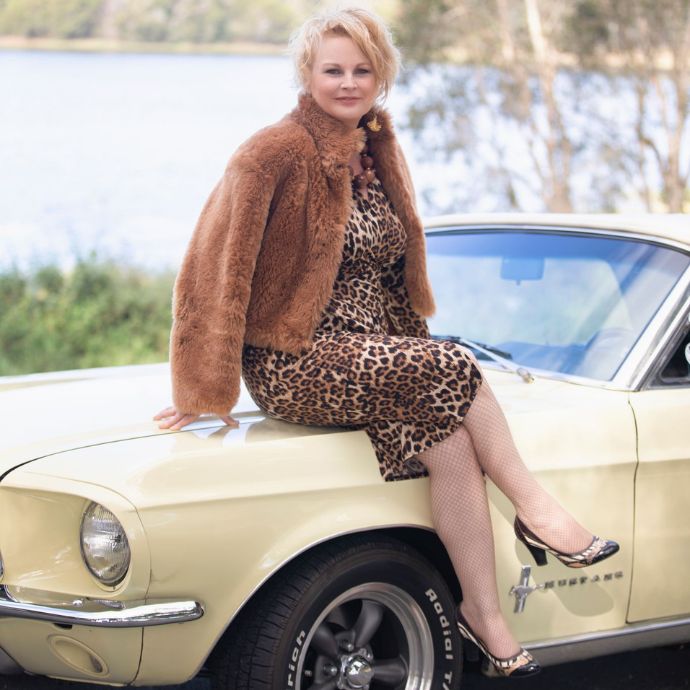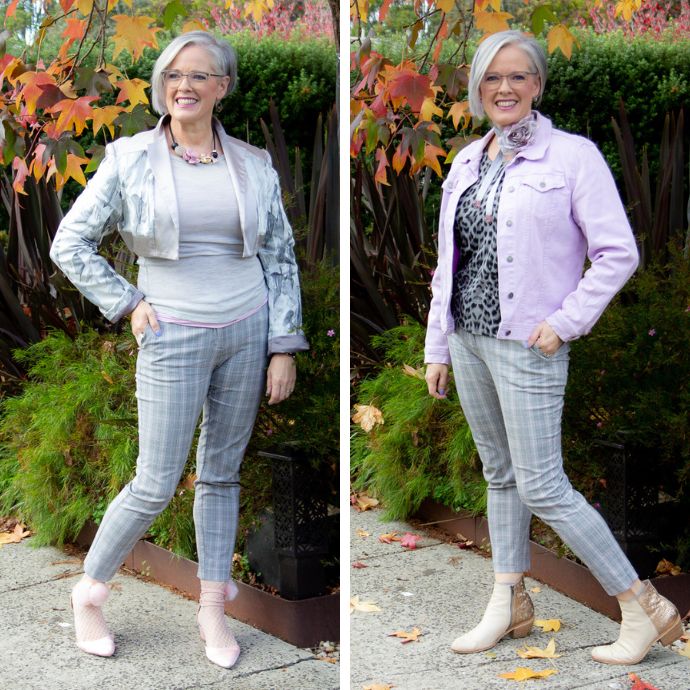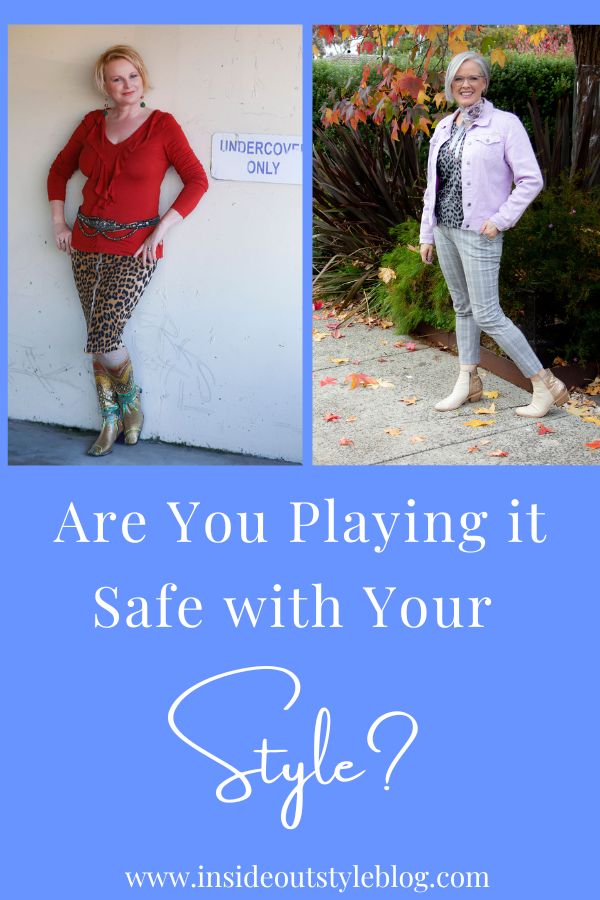[ad_1]
What does playing it safe with your style mean to you?
Jill Chivers 16 Style Types and I discuss this in the video below and attribute it to personality type.
Want to stand out or blend in?
Do you naturally want to play it safe? Does it feel comfortable? or Do you think playing it safe is too boring and almost like a straight jacket for you?
If you’re someone who likes to have a more confident style, copying someone else’s flamboyant style (thinking about how to be stylish) can make you feel unfounded and original.
Then there are others who go to extremes like quitting jobs because the dress code is too strict for them, they are closed off, suffocated and unable to express themselves and bring their best selves to work (and I know I am more like this than the other, in one of my first jobs the management was more concerned about bringing in uniforms). I remember a time he mentioned it, and I remember thinking to myself “I’ll quit then”, even dividing me into hives at the thought of wearing a uniform).
Do You Want a Strict Set of Rules or a Very Loose Set of Guidelines for Your Style?
I’ve noticed that some of my clients want a set of style rules they can follow that they don’t want to change. This makes them feel safe.
Other customers will want a set of loose self-imposed guidelines that they will use as handrails (please don’t talk to them about ‘rules’) (rules feel like handcuffs).
Are You Playing Safe and What Does It Mean to You?
When I play it safe, I’m usually in an overly analytical vacuum where I think too much about what my outfit is conveying. I live by my “image consultant” brand. This has to do with my psychological type (INTJ) because getting out of my head and putting on an outfit for the world can be a problem for me sometimes.
For Jill, who is a very different psychological type to me. (ESFJ), Playing it safe for him means being lazy, not pushing yourself to wear a stylish outfit, dressing without really thinking. He doesn’t pay attention to details when he’s feeling down, like when he’s feeling more alive.
For Jill, the Detection function (introvert Detection precisely) provides stability for continuity in style, which has an almost uniform aspect (although it won’t look like a traditional uniform). Relying on tried, trusted combinations gives them a sense of stability that motivates their style upward. Jill says her ability to use detailed knowledge from her past dressing experiences has helped her create new stylish combinations that have a theme easily observed by others (as the leopard pattern is one of them for Jill, the Signature pattern).
Jill likes to come up with a formula and repeat it in different ways, such as changing colors, the outfit that looks like a leopard print dress, and of course different accessories.
For other types (like mine INTJ or some of us prefer Intuition), many of the same formulas or combinations sound boring. Instead, I try to create new outfits from my existing outfits every day, something a little different, because that seems more exciting (and sometimes even a bit risky) to me. Also, since I’m a big picture thinker rather than a detail person like Jill, I’m not very good at remembering exact combinations I’ve made before.
As an example, here are the same plaid trousers worn two ways (and I have many more outfits with these trousers that I’ve shared and owned here over the past few years).
Even a self-imposed uniform can be an expression of your personality.
Classic “uniform” wearers like Anna Wintour, Steve Jobs, Mark Zuckerberg, for example, all thought of their own style and made an informed decision about what they wore (interestingly, they are all considered NT – Intuitive and Thinking – types in the Myers Briggs system) . They have created a system or process to dress quickly and easily that works for them and that they feel moves them forward to do the things they want to do in life. This is one of the reasons we call it the NT Super Style – Style Strategist – there’s always a conscious strategy behind their style, even if it’s not overtly obvious.
Inside Out Style
It’s so easy to spend money on the wrong clothes when we step outside of who we really are, that we don’t really know who we are and how we should express ourselves through our clothes, we listen instead of going in. Instead of figuring out who we are and how we want to express that wonderful woman, to external advice from fashion magazines, fashion influences, friends and family.
What is safe for you may not be safe for someone else. This is where everything gets very personal. That’s why research shows that the “average woman” doesn’t wear 1/3 to 1/2 of what she buys each year. This may be because we play too safe and bored ourselves stupidly, or because we’re not safe enough, stepping out of our comfort zone and personality too much. Understanding your personality and its impact on your style will help you make the best style decisions.
Here are some questions for you to think about
- What does it mean to play it safe with your style?
- What can motivate you to play it safe with your style?
- What is the impact of playing it safe with your style?
- Playing it safe might not make you feel good, and if you’re playing it really safe, might it not help you in your wider life?
Want to Know How Your Personality Affects Your Style Approach?
Want to discover your Style Type? To really explore your attitude towards style, how you put the clothes together, and what works for you psychologically so that it feels totally real and authentic to you? If so, then check our Your Style Type is your program which opens only once a year. You don’t need to know your type, as the program is something you can explore. It offers a completely different opportunity to look at your style with a new eye. Your Style Type is an invitation to discover yourself and how you want to express it with your style.
[ad_2]
Source link



